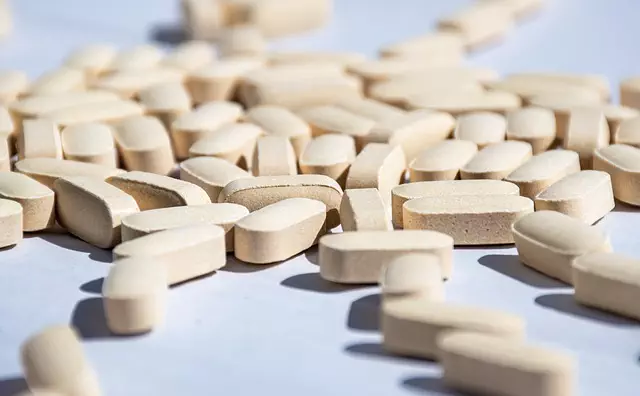Post-traumatic stress disorder (PTSD) is a complex mental health condition requiring specialized PTSD treatment. Effective therapies like Cognitive Behavioral Therapy (CBT), Exposure Therapy, Eye Movement Desensitization and Reprocessing (EMDR), and art therapy manage symptoms. Medication, including SSRIs and SNRIs, balances brain chemicals linked to mood and anxiety. Lifestyle changes, such as regular exercise and balanced diets, promote overall well-being. Support groups and community resources provide safe spaces for emotional support and tailored coping strategies. Long-term PTSD treatment focuses on stability, resilience, and relapse prevention through integrated approaches.
Post-traumatic stress disorder (PTSD) is a complex mental health condition affecting individuals who have experienced or witnessed traumatic events. This article explores comprehensive strategies for effective PTSD treatment, from traditional therapies like Cognitive Behavioral Therapy (CBT) and Exposure Therapy to innovative approaches such as Eye Movement Desensitization and Reprocessing (EMDR), art therapy, and mindfulness techniques. We also delve into medication options, lifestyle changes, support groups, and long-term management strategies for successful PTSD recovery.
Understanding Post-Traumatic Stress Disorder (PTSD): Symptoms and Causes

Post-traumatic stress disorder, or PTSD, is a mental health condition that can develop after exposure to traumatic events. It’s more than just feeling scared or anxious; it’s a complex response that impacts an individual’s daily life and well-being. The symptoms of PTSD can include flashbacks, nightmares, severe anxiety, avoidance behaviors, and heightened emotional reactions. People with PTSD often relive the trauma through intrusive memories, which can be incredibly distressing.
Traumatic events that can lead to PTSD include accidents, natural disasters, violence, or experiencing or witnessing life-threatening situations. It’s important to understand that everyone responds differently to trauma, and not everyone who experiences a traumatic event will develop PTSD. However, for those who do, early intervention and access to effective PTSD treatment are crucial in managing symptoms and improving overall quality of life.
Traditional Therapies for PTSD: Cognitive Behavioral Therapy (CBT) and Exposure Therapy

Post-traumatic stress disorder, or PTSD, is a complex mental health condition that requires specialized treatment. Traditional therapies play a pivotal role in helping individuals manage and overcome their symptoms. Two widely recognized and effective approaches are Cognitive Behavioral Therapy (CBT) and Exposure Therapy. CBT focuses on identifying and modifying negative thought patterns and behaviors associated with traumatic events, empowering patients to develop healthier coping mechanisms. This therapeutic process enables individuals to challenge distorted beliefs, reduce avoidance behaviors, and gain a sense of control over their lives.
Exposure Therapy, on the other hand, involves gradually exposing individuals to traumatic memories or triggers in a safe environment. Through this controlled exposure, patients learn to confront and manage their fears, reducing the intensity of their PTSD symptoms over time. Both CBT and Exposure Therapy have proven to be game-changers in the world of PTSD treatment, offering effective tools for navigating the challenges posed by this condition, ultimately enhancing the quality of life for those affected.
Alternative Approaches: Eye Movement Desensitization and Reprocessing (EMDR), Art Therapy, and Mindfulness Techniques

In the quest for effective PTSD treatment, several alternative approaches have emerged, providing individuals with diverse options to navigate their healing journey. Among these is Eye Movement Desensitization and Reprocessing (EMDR), a therapy that utilizes bilateral stimulation—such as side-to-side eye movements or tactile taps—to help patients process traumatic memories. This technique facilitates the brain’s natural healing process, reducing the intensity of distressing memories and emotions associated with PTSD.
Another innovative method is art therapy, which encourages individuals to express themselves through creative mediums like painting, drawing, or sculpting. By engaging in artistic processes, people can explore and communicate their feelings, memories, and experiences related to trauma in a safe and non-verbal way. This approach not only enhances self-awareness but also offers a unique form of catharsis, fostering emotional healing and resilience in the context of PTSD treatment.
Medication Options for Managing PTSD Symptoms

Medication can play a significant role in managing symptoms of post-traumatic stress disorder (PTSD) and improving overall quality of life for those affected. Selective serotonin reuptake inhibitors (SSRIs) are commonly prescribed as they help balance chemicals in the brain associated with mood and anxiety, easing symptoms like flashbacks, nightmares, and intense emotions triggered by reminders of the trauma. Another type, serotonin-norepinephrine reuptake inhibitors (SNRIs), also target these neurotransmitters but offer additional benefits for specific PTSD symptoms, such as dissociation and negative thoughts.
While not a cure, these medications can be powerful tools in the arsenal against PTSD. They work best when combined with other evidence-based therapies like cognitive processing therapy or eye movement desensitization and reprocessing (EMDR). It’s crucial to consult with a healthcare professional who specializes in PTSD treatment to determine the most suitable medication options and management strategies for individual needs.
Lifestyle Changes and Self-Care Strategies for PTSD Recovery

Lifestyle changes and self-care strategies play a significant role in the recovery process for post-traumatic stress disorder (PTSD). Individuals with PTSD can benefit from adopting healthy habits that promote overall well-being and help manage symptoms. Regular exercise, for instance, releases endorphins that can reduce anxiety and improve mood. Even moderate physical activity, like walking or yoga, can be beneficial. Additionally, maintaining a balanced diet ensures the body has the necessary nutrients to support mental health.
Self-care practices such as mindfulness meditation and deep breathing exercises can help individuals manage stress and flashbacks. Creating a structured daily routine provides a sense of control and predictability. Adequate sleep is crucial, as it allows the brain to process traumatic memories and emotions effectively. Avoiding substances like alcohol or drugs, which may seem appealing for coping, can actually exacerbate PTSD symptoms in the long term. Engaging in activities that bring joy and a sense of accomplishment, whether hobbies, creative pursuits, or spending time in nature, also contributes to a positive recovery journey.
Support Groups and Community Resources for PTSD Treatment

Support groups play a significant role in PTSD treatment, offering individuals a safe and understanding environment to share their experiences and connect with others who have gone through similar traumas. These groups provide a sense of community and belonging, which can be incredibly powerful in the healing process. Members gain access to emotional support, practical advice, and coping strategies from peers who genuinely understand what they’re going through. Many communities also offer resources like counseling services, workshops, and educational programs tailored to PTSD recovery, further enhancing the available support network for those seeking PTSD treatment.
Community resources extend beyond formal groups, encompassing various initiatives focused on mental health awareness and well-being. These can include local therapy clinics, peer mentoring programs, and community events aimed at reducing stigma associated with PTSD. Such diverse offerings encourage individuals to take proactive steps towards healing by providing convenient access to information, care, and a sense of belonging within their own communities, thereby fostering resilience in the face of PTSD.
Long-term Management and Prevention of Relapse in PTSD

Post-traumatic stress disorder (PTSD) treatment isn’t just about addressing acute symptoms; it’s also about long-term management and prevention of relapse. After initial therapy, maintaining stability involves a combination of strategies tailored to individual needs. Cognitive behavioural therapy (CBT), for instance, equips individuals with coping mechanisms and skills to manage intrusive thoughts and flashbacks effectively. Regular therapy sessions, even after the initial phase, can help prevent relapse by providing ongoing support and addressing any new challenges that arise.
Additionally, lifestyle changes play a crucial role in long-term management. This includes regular exercise, which has been shown to reduce symptoms of PTSD by promoting neuroplasticity and releasing endorphins. Mindfulness practices, such as meditation or yoga, can help individuals stay present and regulate their emotions. Social support from family, friends, or support groups is also vital for maintaining mental health, as it provides a safety net during difficult times. Preventive measures like these ensure that individuals with PTSD remain resilient and better equipped to handle potential triggers in the future.
